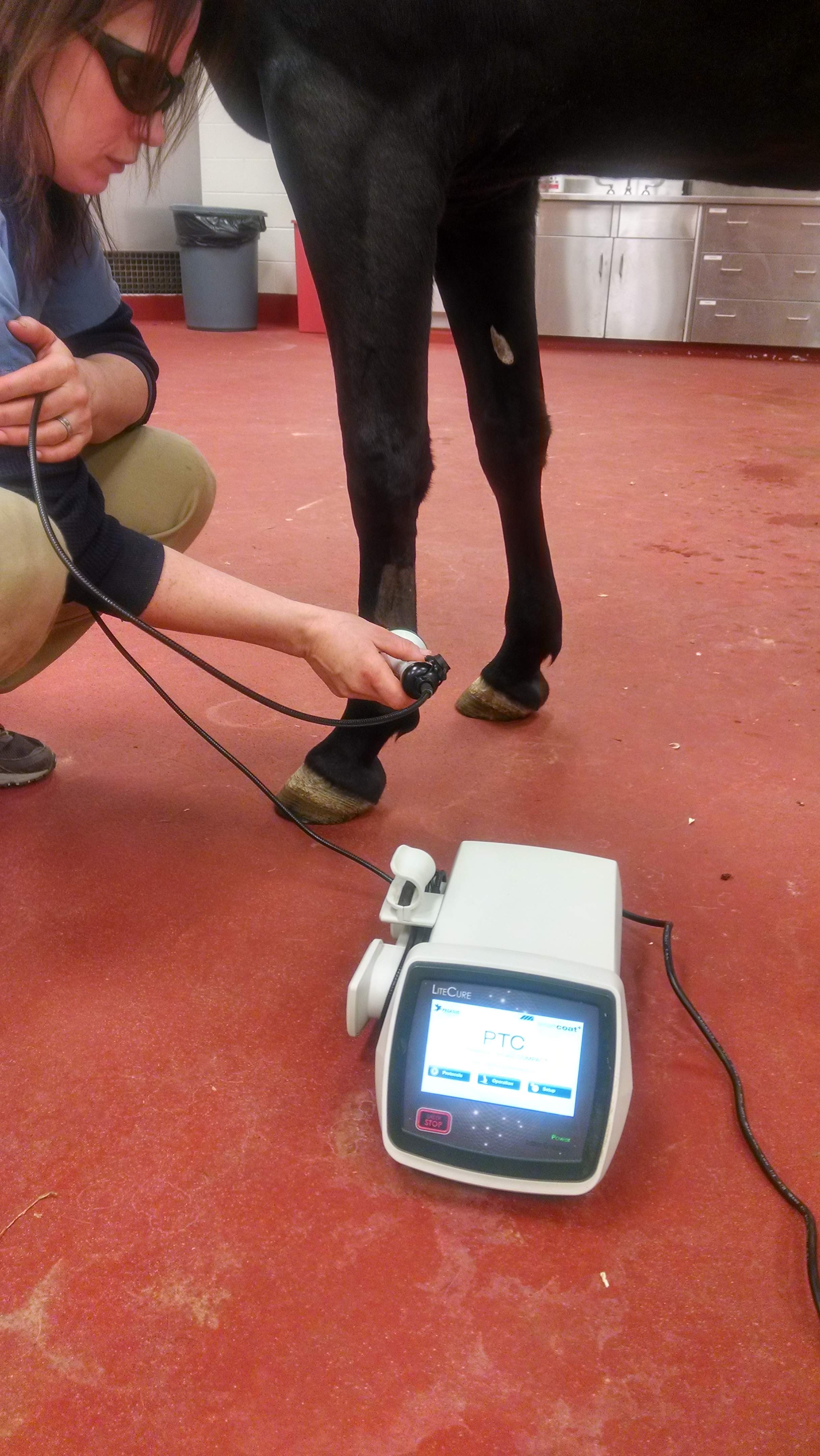Equine Therapy Success Stories: Actual People, Actual Emotional Transformations
Equine Therapy Success Stories: Actual People, Actual Emotional Transformations
Blog Article
Reviewing the Efficiency of Laser Treatment in Horse Therapy for Injury Recovery
The analysis of laser treatment's efficiency in equine injury rehabilitation hinges on multiple variables, including recuperation time, discomfort mitigation, and tissue regeneration. Vets regularly observe superior outcomes with laser treatment contrasted to conventional techniques, positioning it as a critical element in equine care.
Comprehending Laser Therapy
Laser treatment has come to be an essential device in veterinary medication, specifically in the therapy of equine conditions. Recognized for its non-invasive nature and efficiency, laser therapy includes the application of certain wavelengths of light to boost cells repair and lower inflammation. This healing technique is progressively preferred for its ability to increase the recovery process in steeds struggling with a range of bone and joint injuries and chronic problems.
The main system behind laser therapy is its capacity to enhance mobile functions. Furthermore, laser therapy promotes vasodilation, enhancing blood circulation and oxygen distribution to damaged cells, thus speeding up healing.
In equine medicine, laser treatment is particularly helpful for conditions such as tendonitis, osteo arthritis, and wound healing. The method is admired for its pain-relieving residential properties, enabling horses to reclaim mobility and function a lot more quickly. Veterinarians also value its minimal side effects compared to various other treatment methods, making it a dependable and secure choice for equine treatment.

Just How Laser Treatment Functions

Upon absorption, these photons set off a series of biochemical adjustments, enhancing mitochondrial function and bring about boosted adenosine triphosphate (ATP) production. This increase in ATP speeds up cellular metabolic rate, promoting tissue repair work and regrowth. Furthermore, laser therapy modulates inflammatory feedbacks by impacting cytokine levels and decreasing oxidative tension, thus alleviating pain and swelling.
One more considerable facet of laser therapy is its function in boosting microcirculation. The treatment promotes vasodilation, enhancing blood circulation and oxygen delivery to damaged cells (Equine Therapy). This helps with the elimination of mobile debris and sustains the proliferation of fibroblasts and collagen synthesis, crucial for injury healing
Medical Evidence
The efficacy of laser treatment in equine therapy has been validated through various medical studies, showcasing its restorative possible across a range of problems. A research performed by Turner et al. (2012) demonstrated that steeds treated with read here low-level laser therapy (LLLT) for ligament injuries displayed accelerated healing contrasted to those receiving standard treatments.
Similarly, study by Johnson and coworkers (2015) concentrated on equine muscular tissue injuries, disclosing that laser treatment substantially accelerated muscular tissue fiber regeneration and decreased muscular tissue stiffness. These searchings for were supported by histological evaluations revealing improved muscle tissue company. Medical analyses have actually revealed that laser treatment can reduce chronic problems such as osteoarthritis. A research study by Smith et al. (2018) reported that steeds with osteoarthritic joints experienced significant discomfort relief and raised variety of movement following a regimen of laser treatment sessions.
Veterinarian Insights

Vets likewise appreciate the versatility of laser therapy. She aims out that laser therapy can be tailored to look at here now the details needs of each horse, guaranteeing optimal end results.
In addition, veterinarians value the ability to incorporate laser treatment with other treatment techniques. This multimodal technique can boost general treatment efficacy, offering a detailed service for equine rehab. Such recommendations from skilled experts underscore the expanding acceptance and application of laser treatment in equine medication.
Practical Considerations
An essential facet of applying laser treatment in equine therapy includes comprehending the functional considerations that ensure its efficiency and security. First and primary, it is critical to pick the proper laser tool, as numerous kinds vary in wavelength, power, and infiltration depth. Equine Therapy. Veterinarians must be skilled in these criteria to customize therapy methods properly to every injury type
In addition, the regularity and duration of laser therapy sessions require careful planning to make best use of therapeutic advantages while minimizing any potential adverse effects. Consistent tracking of the steed's response to therapy can direct essential changes in the treatment program. Developing a risk-free and regulated environment during treatments is likewise necessary to prevent unintended direct exposure to laser discharges, which could damage both the horse and the trainer.
Training and qualification of employees providing laser therapy are extremely important to guarantee correct method and to support safety and security criteria. Furthermore, maintaining accurate documents of each session, including laser settings and observed end results, is vital for assessing the general efficiency of the therapy and for making data-driven choices.
Conclusion
Laser treatment has emerged as an effective technique in equine injury rehabilitation, supplying significant advantages in healing time, pain relief, and tissue healing. For ideal outcomes, constant surveillance and personalized therapy methods continue to be important in leveraging the complete capacity of laser therapy in equine treatment.
Report this page